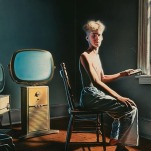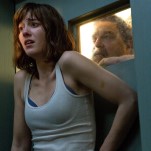Syfy’s Astrid & Lilly Save the World Is a Quirky Throwback with Potential
Photo Courtesy of Syfy
Supernatural teen dramas used to be a dime a dozen. After all, few things are as universally understood as the trials and tribulations of high school. Add in some creepy monsters, some world-saving heroics, and a mysterious figure who seems to have all the answers, and you’ve got the makings of a coming-of-age series jam-packed with relevant and familiar life lessons. But there haven’t been quite as many in recent years, which gives Syfy’s new series Astrid & Lilly Save the World space to breathe.
The show, which hails from co-creators and executive producers Noelle Stehman and Betsy Van Stone, follows the titular outcasts played by Jana Morrison and Samantha Aucoin. They spend their evenings patrolling their hometown and spying on classmates (they’d call it research) to learn how the so-called cool kids spend their time. Their actions—driven by a love for SVU’s Olivia Benson and a desire to fit in—aren’t exactly a secret, and do not endear them to the rest of their class. But they have the effect of literally positioning Astrid and Lilly on the outside looking in, telling us from the start that these two young women aren’t your typical heroines.
-

-

-

-

-

-

-

-

-

-

-

-

-

-

-

-

-

-

-

-

-

-

-

-

-

-

-

-

-

-

-

-

-

-

-

-

-

-

-

-








































